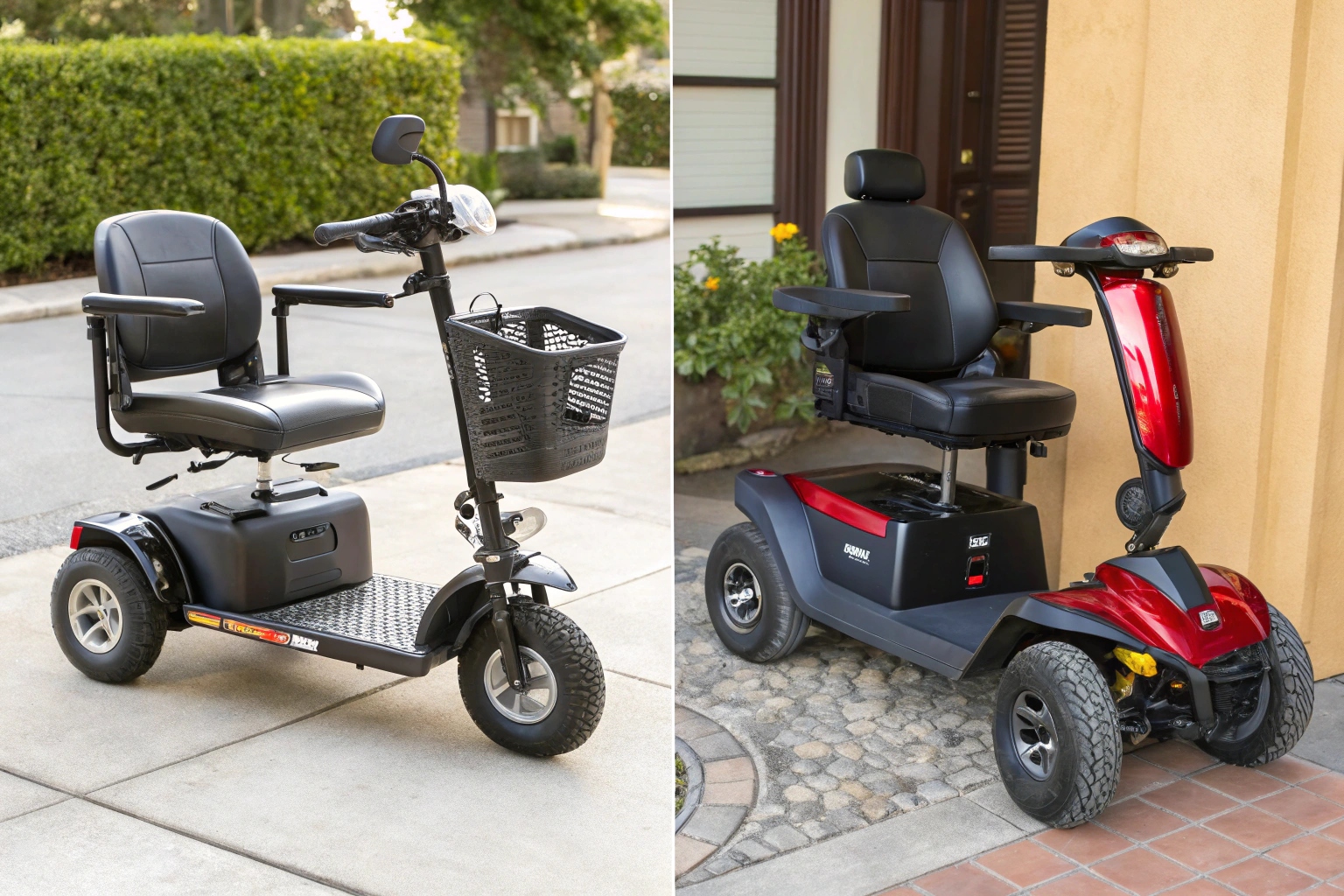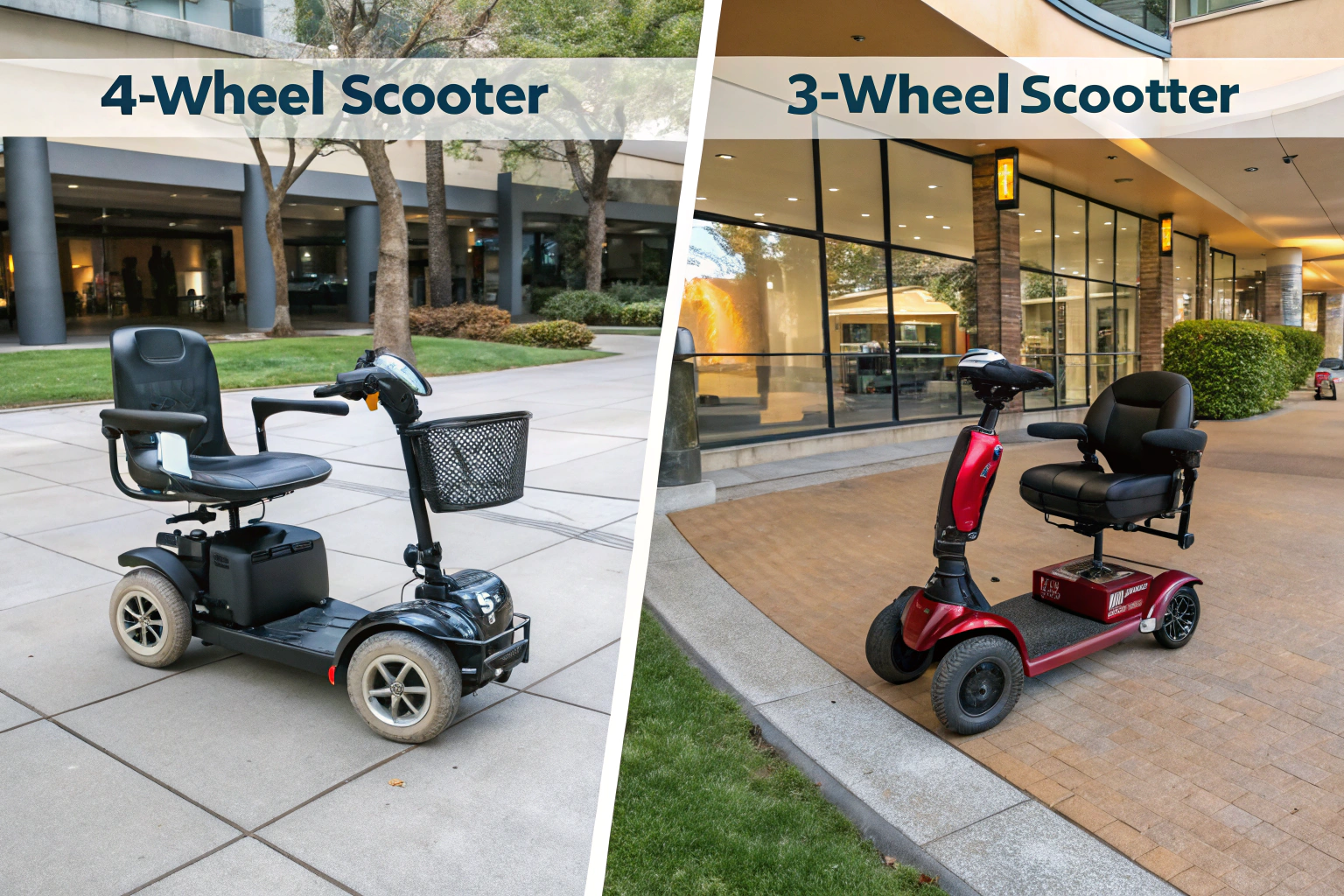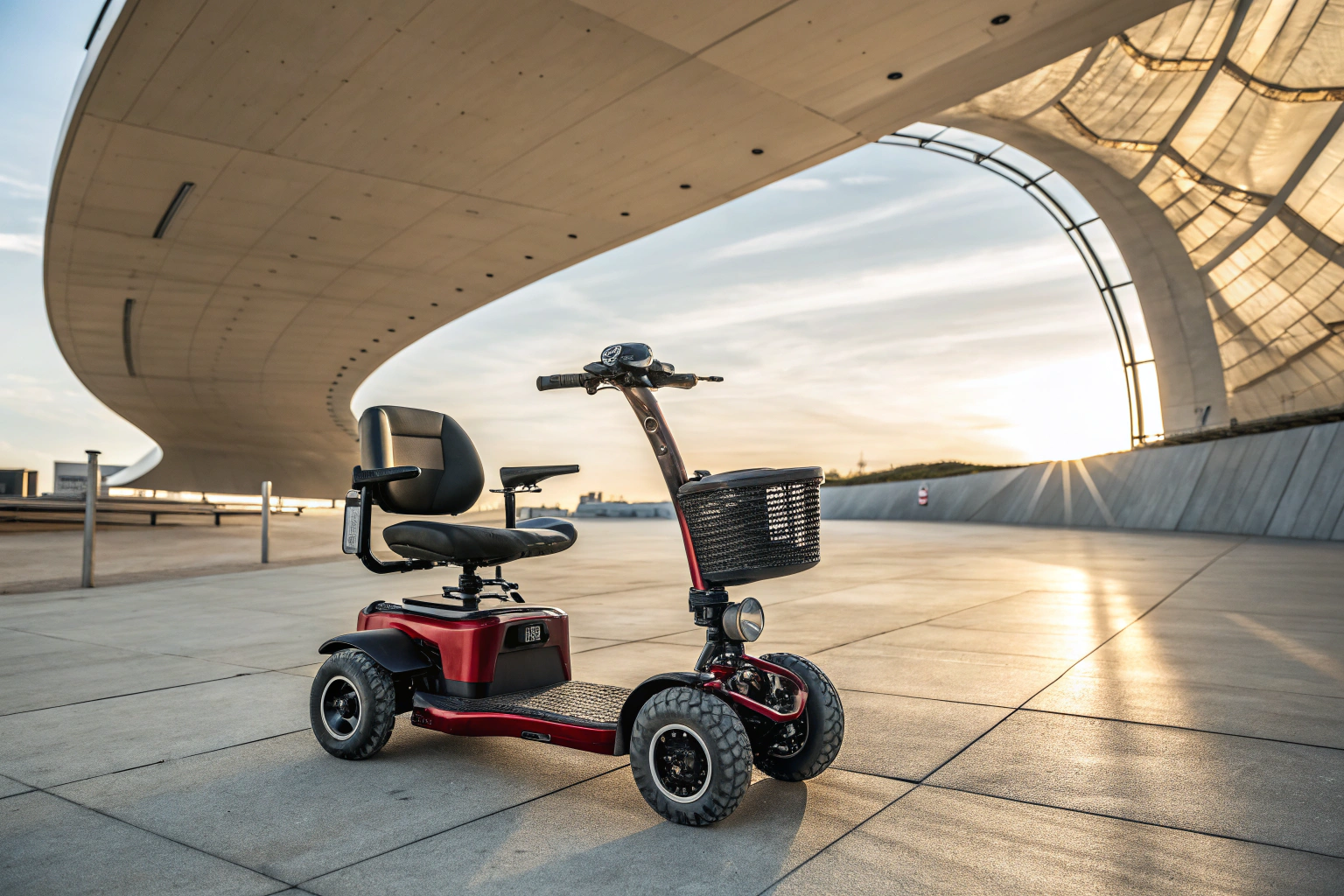Choosing a mobility scooter can be confusing. The wrong choice leads to unhappy customers, so you need to know the facts to pick the right model for your market.
While 3-wheel scooters offer better maneuverability for indoor use, most people prefer 4-wheel mobility scooters for their superior stability, versatility, and safety on varied outdoor terrains. The market reflects this preference with a wider availability of 4-wheel models.

The choice isn't just about what's popular; it's about matching the right vehicle to the real-world needs of the user. As a factory that builds both, I've seen firsthand what works best in different environments. We need to go beyond the number of wheels and understand what that means for the rider. Let's break down the most common questions importers and distributors ask me so you can make an informed decision for your business.
Which is better, a 3 or 4-wheel mobility scooter?
Deciding between three and four wheels feels like a big risk. If you import the wrong type, you could be stuck with inventory that doesn't sell in your local market.
Neither is "better" in all situations, but a 4-wheel scooter is the superior choice for all-around use. Its stability makes it suitable for both indoors and outdoors, while a 3-wheeler is best limited to tight, flat indoor spaces like shopping malls.

When my clients ask me this question, I always ask them about their customers' local roads. The answer depends entirely on where the scooter will be used. From my experience in the factory, the reason you see more 4-wheel models on the market is that they serve a much broader need. They provide the confidence users need for daily life.
The Case for 3-Wheels: Agility
A 3-wheel scooter's main advantage is its raio de viragem apertado. The single front wheel allows it to pivot sharply, which is great for navigating narrow hallways or crowded store aisles. They also tend to offer more legroom since there are no wheels arches in the front to get in the way. However, this design comes at the cost of stability.
The Case for 4-Wheels: Stability
A 4-wheel scooter has a wider base of support, just like a car. This makes it far more stable, especially on uneven ground, slopes, or when turning. This stability is the number one reason they are more popular. People want to feel safe when they are driving on a sidewalk, in a park, or across a parking lot. A 4-wheeler provides that peace of mind.
Aqui está uma tabela simples que eu uso para ajudar meus clientes a decidir:
| Recurso | Scooter de 3 rodas | Scooter de 4 rodas |
|---|---|---|
| Stability | Lower; prone to tipping on uneven ground | High; very stable on most terrains |
| Raio de giro | Very tight; excellent for indoors | Wider; good for general use |
| Legroom | Generally more | Can be slightly less |
| Terrain Capability | Best for flat, smooth surfaces | Good for sidewalks, grass, gravel |
| Primary Use Case | Indoors, shopping centers | Outdoors, all-around daily use |
Ultimately, while some users might appreciate a 3-wheeler's agility inside, the 4-wheeler is the more practical and versatile option for the majority of riders.
Do 3-wheel mobility scooters tip over?
You hear stories about scooters tipping over, and that is a major safety concern. A single accident can damage your customer's confidence and your business's reputation. Let's look at the real risk.
Yes, 3-wheel mobility scooters have a significantly higher risk of tipping compared to 4-wheel models. This is due to their triangular wheelbase and higher center of gravity, especially when making sharp turns or driving on uneven surfaces or inclines.

The risk of tipping is the biggest drawback of the 3-wheel design. It’s a matter of simple physics. A vehicle with three points on the ground is less stable than one with four. In the factory, we can add safety features like anti-tip wheels at the back, but we cannot change the fundamental design.
Understanding the Center of Gravity
Imagine a triangle. It's easy to tip it over one of its edges. Now imagine a rectangle. It's much harder to tip over. A 4-wheel scooter has a rectangular base, distributing the rider’s weight evenly across four points. A 3-wheel scooter has a triangular base. When a rider takes a sharp turn, their weight shifts to the outside, and if it moves past the base of support, the scooter can easily tip. I once had a client from Latin America who insisted on 3-wheelers for a food delivery project. After testing a sample on their city's sloped streets, they quickly changed their order to 4-wheel models for the safety of their drivers.
When is Tipping a Real Concern?
The risk isn't just theoretical. Tipping becomes a very real danger in these common situations:
- Driving along a slope: If a road is slanted to one side.
- Turning too quickly: Especially on a slight incline or decline.
- Hitting a curb or pothole: The impact can easily unbalance the scooter.
- Navigating uneven terrain: Such as bumpy lawns or cracked sidewalks.
For these reasons, I almost always recommend 4-wheel scooters to distributors who are selling to the general public, especially elderly users or those with balance issues. The added stability is a crucial safety feature.
Are 3-wheel mobility scooters safe?
Safety is non-negotiable. You cannot afford to sell a product that puts your customers at risk. So, let’s be very clear about what "safe" really means for a mobility scooter.
A 3-wheel mobility scooter can be safe when used correctly in its intended environment: flat, smooth, indoor surfaces. However, a 4-wheel scooter is inherently safer for general use because its stable design minimizes the risk of tipping on common outdoor terrains.

Safety is all about matching the tool to the job. A knife is safe in the kitchen but dangerous in the hands of a toddler. Similarly, a 3-wheel scooter is safe inside a building. It's much less safe on a public road with real-world hazards. As an exporter, your goal is to provide a product that is safe for your customer's actual environment, not just an ideal one.
Safety in the Right Environment
The intended use for a Scooter de 3 rodas is very specific. It's designed for maneuverability in confined spaces. Think of it as an "indoor vehicle." If a user lives in a large retirement community with wide, flat, and smooth hallways and only uses it to get to the dining hall, a 3-wheeler is perfectly fine. The moment they want to go outside to get the mail or visit a neighbor across a grassy lawn, the risk increases dramatically.
Why 4-Wheels Offer a Wider Safety Margin
The 4-wheel design automatically provides a wider safety margin. It handles everyday imperfections—like cracked pavement, small inclines, and grassy patches—without compromising stability. For a business, this is a huge advantage. You are providing a product that can handle a wider range of situations safely. This reduces liability and customer complaints. When government projects or large distributors place orders with us, they almost exclusively choose 4-wheel models. They know that public safety and reliability are key, and the 4-wheel platform delivers on that. The extra stability isn't a luxury feature; it's the foundation of a safe ride.
What is the most common problem with mobility scooters?
Even the best scooter will eventually have issues. If you are not prepared for common problems, you will face angry customers and a damaged reputation. Knowing what to expect is half the battle.
By far, the most common problems with any mobility scooter, whether 3 or 4 wheels, are related to the battery. This includes not holding a full charge, reduced range over time, and damage from incorrect user charging habits.

I've been in this business for a long time, and I can tell you that about 80% of the after-sales calls we support are about batteries. The scooter itself is a simple machine: a motor, a controller, and wheels. But the battery is a complex chemical component that requires proper care. Many users don't understand this, which leads to problems.
The Heart of the Problem: Batteries
The battery is the scooter's fuel tank, and it's the part that wears out the fastest. Most issues fall into a few categories:
- User Error: This is the biggest one. Users might forget to charge it after use, leave it on the charger for days on end, or use the wrong charger. Lead-acid batteries, in particular, need to be charged regularly to stay healthy.
- Reduced Lifespan: All batteries degrade over time. A typical lead-acid battery might last 1-2 years, while a lithium battery can last much longer, but they both have a limited number of charge cycles.
- Range Anxiety: Users often expect the maximum advertised range, but real-world conditions like hills, rider weight, and cold weather can significantly reduce it. This isn't a fault, but a mismatch of expectations.
Beyond the Battery: Other Common Issues
While batteries are number one, other parts can also cause problems. As an importer, you should be prepared to handle these as well.
- Tires and Wheels: Punctures or simple wear and tear are common, especially with air-filled (pneumatic) tires. Solid tires avoid this but offer a harder ride.
- Freios: The electromagnetic brakes are usually very reliable, but sometimes need adjustment.
- Controller or Throttle: These electronic parts can fail, though it's less common. The scooter might not move, or move erratically.
- Conexões soltas: Vibrations from daily use can sometimes loosen a wire, causing intermittent power loss.
I always advise my clients to order a basic spare parts kit with their first container. Having extra batteries, chargers, and tires in stock means you can solve your customer's biggest problems immediately. It's the best way to build a reputation for great service.
Conclusão
Ultimately, while 3-wheelers excel indoors, 4-wheel scooters offer the superior stability and versatility most users need for daily life. This understanding helps you choose the right product for your market.

